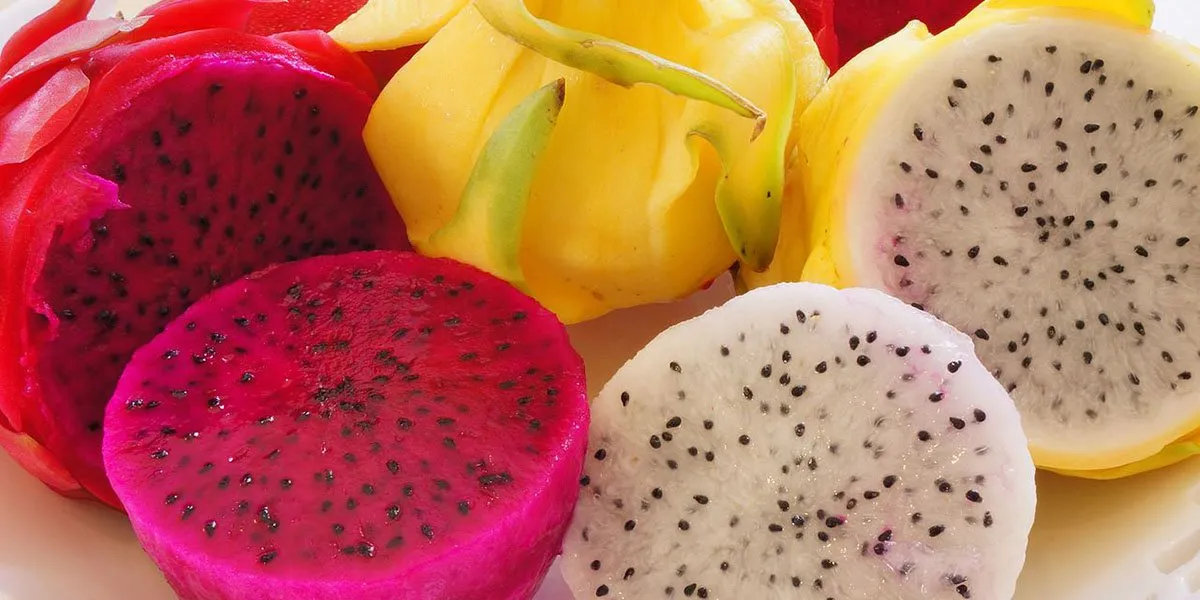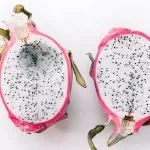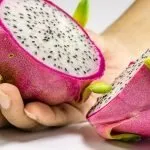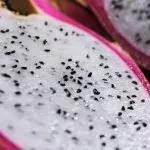Between white, red, and yellow dragon fruit a lot of differences exist. The tropical delicacy also known as pitaya has many different colors, flavors, and health benefits.
This overview will compare yellow with red dragon fruit. In another overview, we looked at the differences between white and red dragon fruit. Let’s explore the interesting facts that go beyond the colors alone. This YouTube video by Weird Explorer might also help you out with your decision:
1. Yellow Dragon Fruit Is More Nutritious
A lot of people are choosing their favorite variety based on nutritional value and potential health benefits. To make a long story short: it won’t matter much which one you choose, they are both really good for you.
Whereas red dragon fruit contains more antioxidants, yellow dragon fruit is richer in vitamins and minerals, most notably calcium, iron, as well as vitamin A and C.
The reason for the higher mineral content in the yellow variety comes down to its smaller size. More concentration of edible flesh translates into a higher density of nutrients and flavors.
2. Red Dragon Fruit Is Less Sweet
Red dragon fruit is often praised for its sweet flavor and higher sugar content as compared to the common white dragon fruit (also called pitaya). However, that’s nothing compared to the yellow variety, which is full of sugar!
The sugar content percentage for all major varieties are as follows:
- White pitaya: 10% sugar content
- Red pitaya: 15% sugar content
- Yellow pitaya: 20 – 25% sugar content
It might seem counterintuitive to a lot of people. But yellow pitaya is the opposite of a citrus fruit. It’s very low in acidity and very high in sweetness. It’s absolutely packed with flavor, especially when compared to the rather bland white variety.
3. The Flavors Are Incomparable
If you checked out the YouTube video embedded at the top of this overview, you’ll know that there’s a big difference between the flavors for all major types of dragon fruit.
Experienced fruit connoisseurs will immediately recommend the delicious yellow variety. The reason is simple: it’s the tastiest genus out there!
While the flavor of red dragon fruit isn’t bad either, they are definitely a world apart. Here’s how to best describe the flavors of the most common varieties on the market:
- White dragon fruit tastes like a subtle mix of kiwi and pear, slightly sweet but rather bland and inoffensive
- Red dragon fruit tastes noticeably sweeter than white dragon fruit, with a hint of berry
- Yellow dragon fruit has a much sweeter flavor than white or red dragon fruit, it has a smooth and savory texture with a hint of lychee
4. Yellow Is Smaller Than Red Dragon Fruit
We already briefly mentioned the size of the yellow pitaya compared to the other varieties. They are small, and jam-packed with flavors and nutrients.
While small varieties of red dragon fruit exist (here’s an image reference) the yellow variety definitely is the odd one out. It doesn’t just have a different skin type that’s very thorny, it’s also a variety that is the smallest by default.
The small size of the yellow pitaya is quite ironic when you think of the fact that its scientific name is actually Selenicereus megalanthus (formerly called Hylocereus megalanthus). It’s not really that ‘mega’ at all in comparison.
5. Seed Size Differs Considerably
Much like a kiwi, the flesh of the dragon fruit contains a lot of tiny black seeds. Not only do the edible seeds add texture, but they might also be good for your health.
White and red dragon fruit varieties only have small seeds, while the yellow dragon fruit variety has a lot of slightly larger black seeds. They are more noticeable and crunchy, but are still edible and good for you.
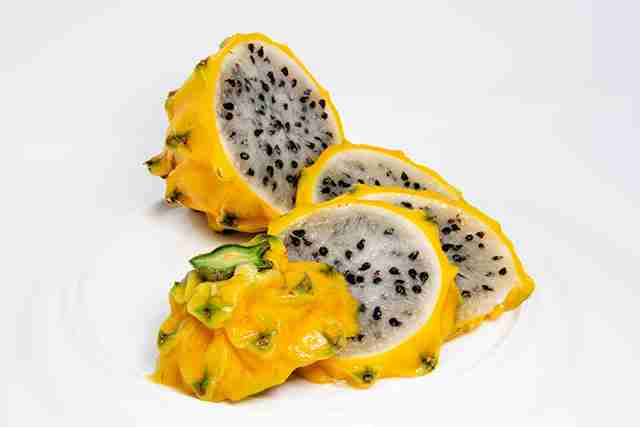
While the crunch of the seeds is more noticeable in the yellow pitaya, it is never annoying or offensive. They add a lot to the texture of the fruit, but some people might not enjoy the crunch on this variety.
6. Yellow Dragon Fruit Is A Winter Variety
One of the most interesting characteristics of the yellow dragon fruit, is the fact that it has a completely different harvesting season. Yellow pitaya is a winter fruit, instead of summer fruit like the red pitaya.
The harvesting season impacts the price of the dragon fruit varieties as well, since more harvest means more supply. One can imagine that fruits in season are the cheapest, while they can be more expensive at other times of the year.
The main harvesting periods for the most important varieties are as follows:
- White dragon fruit: June – September (Summer)
- Red dragon fruit: June – September (Summer)
- Yellow dragon fruit: November – February (Winter)
7. Red Variety Will Leave Stains
It’s not mentioned a lot, but the red pitaya does leave a lot of pink stains on your lips, teeth, and more importantly your clothes. That can be a problem, especially if you’re feeding the fruit to your baby or younger children.
The dye that’s in red dragon fruit is rather hard to remove from clothes, while the translucent flesh of the yellow dragon fruit will not leave any stains.
It’s a practical problem that a lot of people will overlook. Just like the fact that eating red dragon fruit might color your feces if you eat a lot of it. So don’t be panicked when you go to the toilet and a red mess comes out!
8. Red Dragon Fruit Is More Visually Appealing
Beauty is in the eye of the beholder, this is true for all things in life. When it comes to presentation, the red variety will look a lot more ap-peal-ing (get it, because you peel the skin off). So if you’re presenting a fruit bowl at a party, the red variety might be the one to choose.
It’s also a lot easier to sell the red fruit variant to younger fruit fans. If you want your kids to eat something healthy, they will love to bite into the red flesh with small seeds, instead of the translucent white flesh with big seeds.
It’s the small things that make a difference. Your preference can be based on a lot of factors. We hope this overview has provided you with the help you need. If it did, make sure to share it with your friends and family!
Featured image adapted from: Wikimedia Commons
